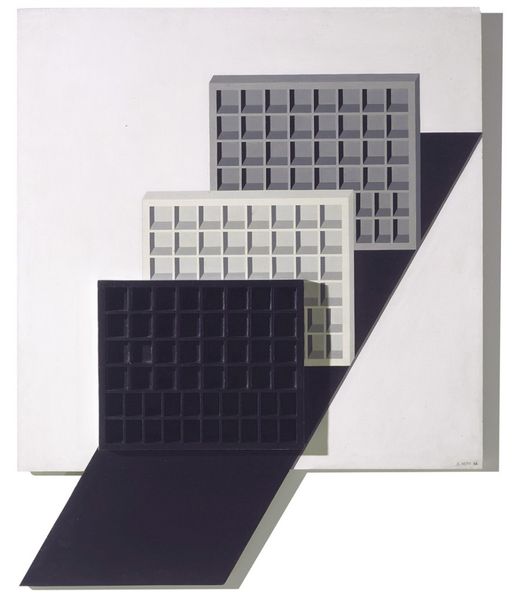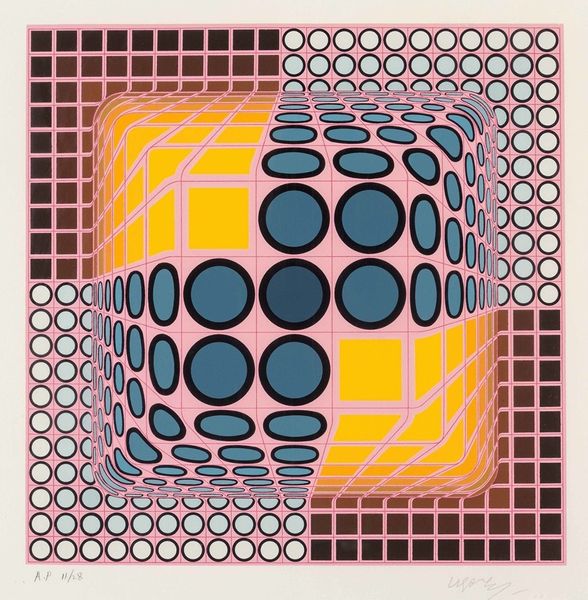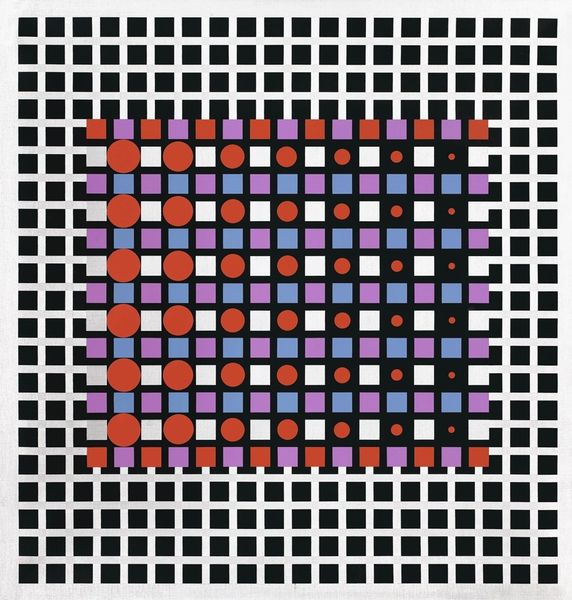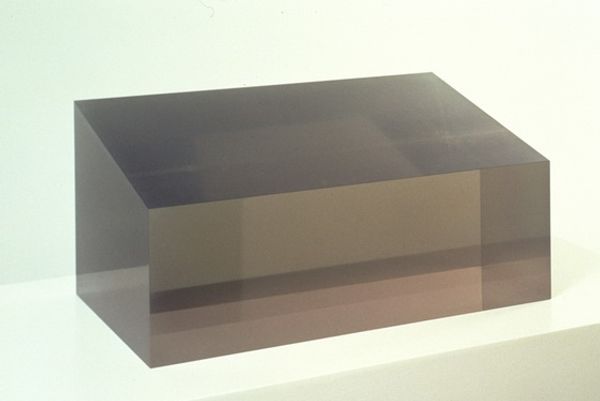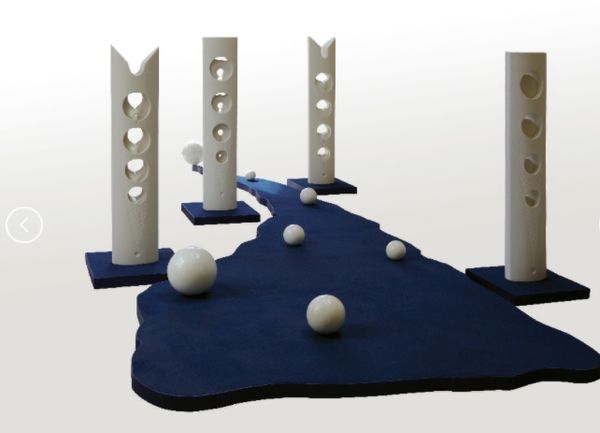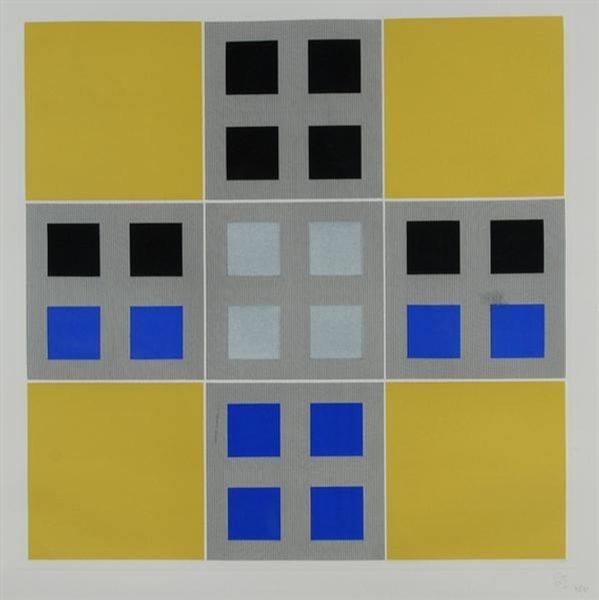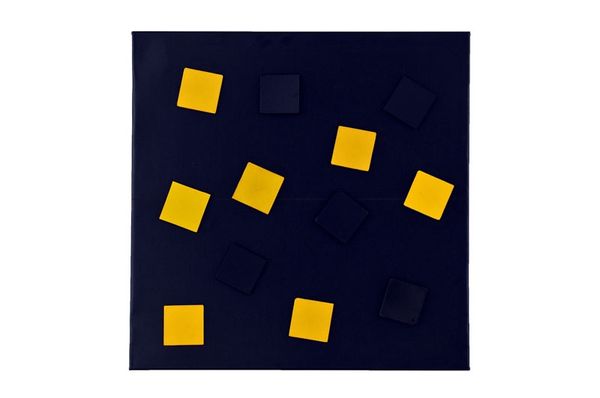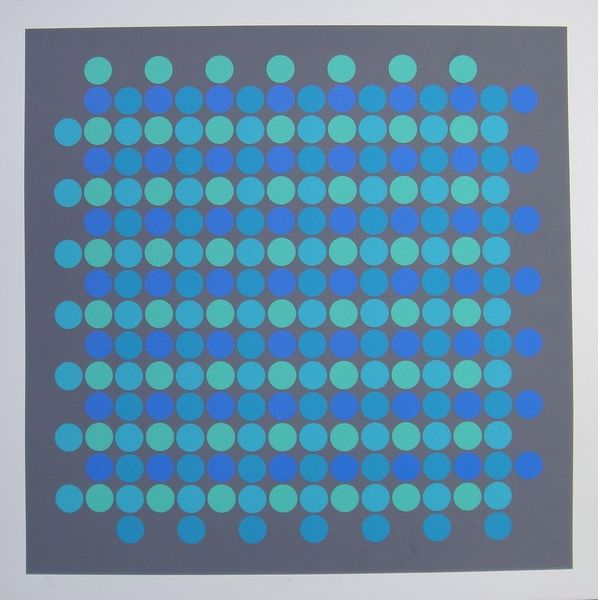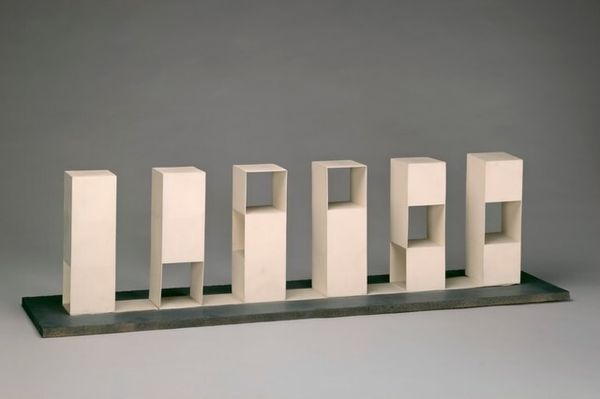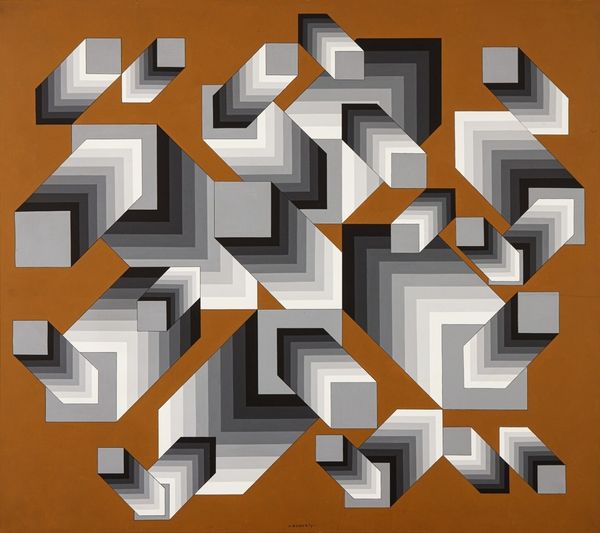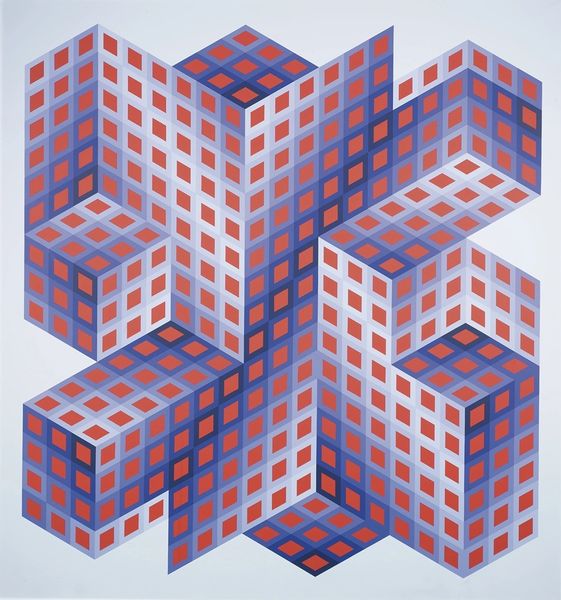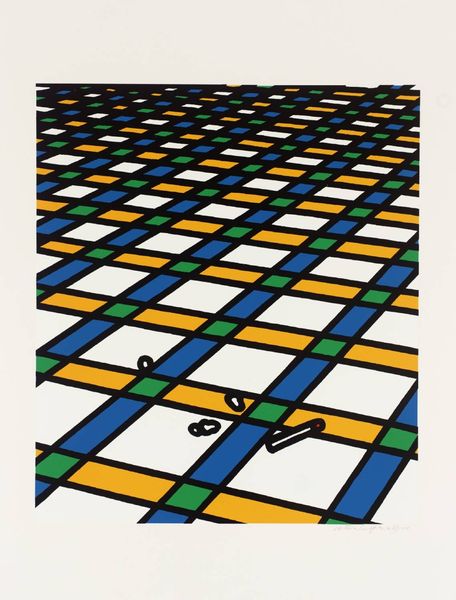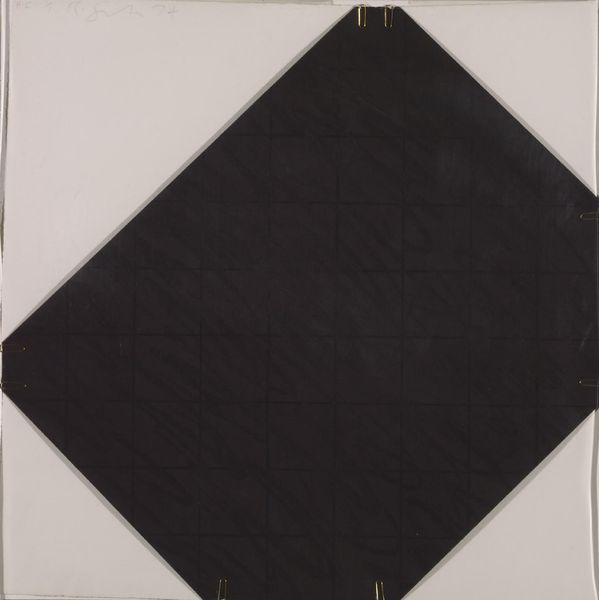
painting, oil-paint
#
painting
#
oil-paint
#
geometric
#
geometric-abstraction
#
abstraction
#
modernism
Copyright: Eduardo Nery,Fair Use
Curator: This artwork, crafted by Eduardo Nery in 1969, is entitled "Espaço Ilusório II." It's an oil painting that very much captures the spirit of geometric abstraction. Editor: My first impression is a strange feeling of containment, as if observing some kind of modernist diorama or urban model held in stasis. Curator: Indeed, the composition is key here; the careful arrangement of geometric forms constructs a highly ordered yet unsettling space, as the two rows of squares recede in illusory perspectives. Nery’s precision with color creates a structured but deliberately flattened field. Editor: That constructedness, I think, invites us to consider the social planning ideals of the period. Those blocks feel like an assertion of control, maybe a somewhat cold commentary on urban development during the late 60s. Were the utopic visions of modernism already showing their cracks by then? Curator: It's tempting to say so. Looking at the cool tones of blue and brown, the restrained palette adds to the sense of constructed reality rather than mirroring any direct referent. The artist may be inviting reflection not merely upon urban landscapes, but upon modes of perception itself. Editor: Well, it definitely highlights how spaces, even abstract ones, reflect or challenge systems of power, suggesting maybe the artist was critically assessing modernist approaches to spatial organization and raising a dialogue about social engineering in built environments. Curator: Ultimately, what stands out is the painting's own constructed, illusory depth – or rather, its artful suppression of true depth for aesthetic purposes. The meticulous paint application denies tactile qualities, amplifying the artifice. Editor: The way it plays with flatness against these suggestions of dimension almost forces you to contemplate your position as a viewer in relationship to it. Not simply "looking in", but existing somehow within the theoretical and political frameworks that inform the scene. Curator: I see it as an intricate arrangement inviting contemplation on perception and composition above any social commentary. Editor: Perhaps that dichotomy is precisely where meaning occurs: through an intersection of formalism and social reflection.
Comments
No comments
Be the first to comment and join the conversation on the ultimate creative platform.
